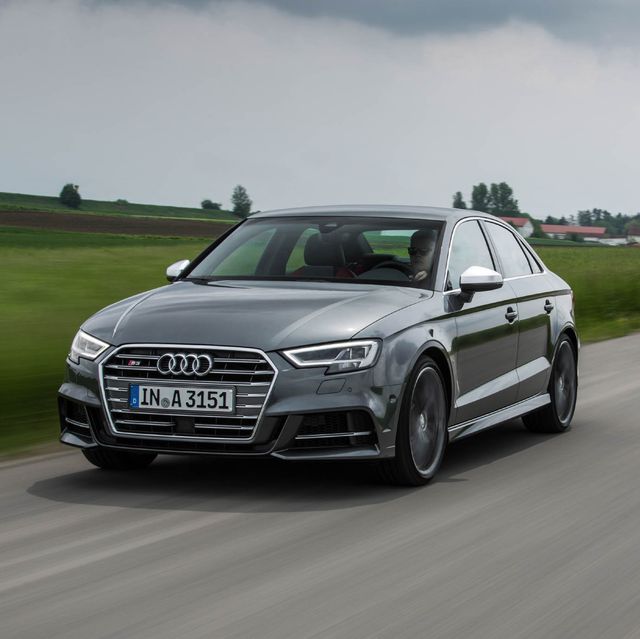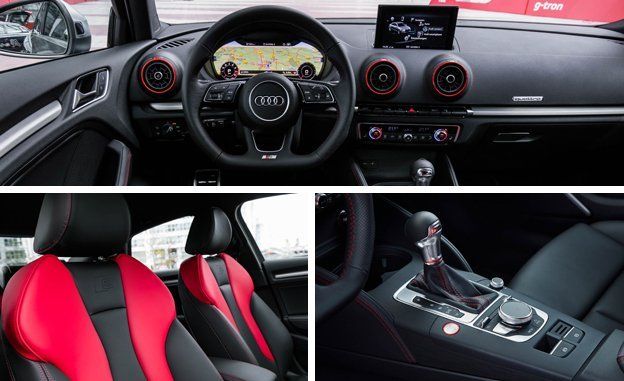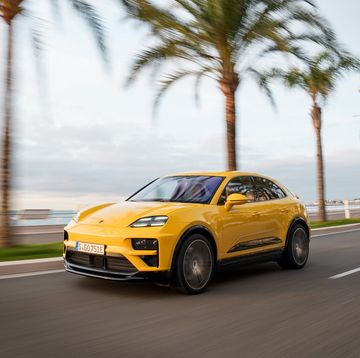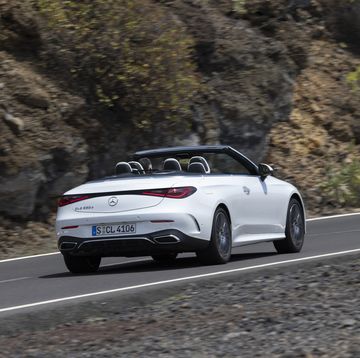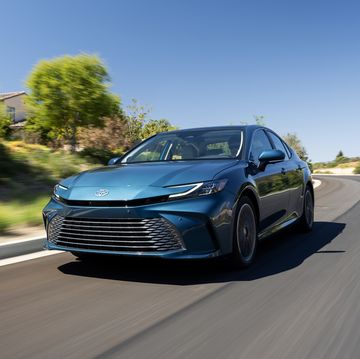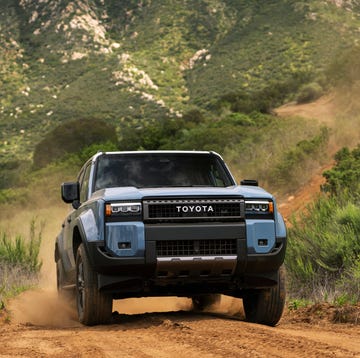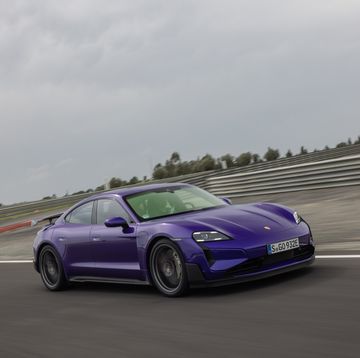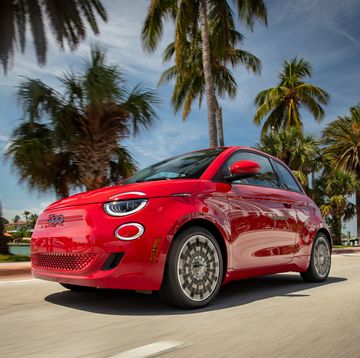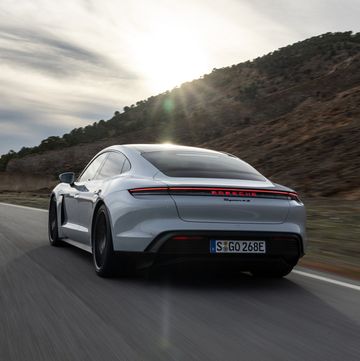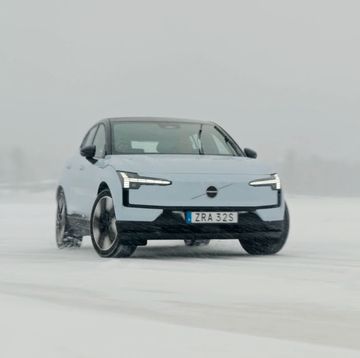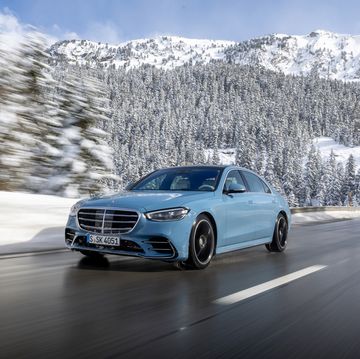The 2017 Audi S3 finds itself in good company. Ask people about hot compact cars, and the Volkswagen Golf R and the Ford Focus RS leap to mind. For those sterner of spine and more tolerant of interiors built from lesser materials, there is the Subaru WRX STI. Europeans also go big for the likes of the Renault Mégane RS and the Peugeot 308 GTi, plus Honda’s Civic Type R (the next generation of which will come to the United States.).
Maybe it’s because such a conversation doesn’t regularly involve Audi, or maybe it’s because the S3 isn’t the apex predator of Audi’s small-car lineup—that’d be the achingly anticipated five-cylinder RS3—but our subject car has always been a slower burn. Instead, it’s Audi’s idea of a hot compact softened just a bit and with a higher level of interior finish and comfort than the category norm. It’s a quick car you can live with.
And the Audi S3 just got even better at what it does. There wasn’t a lot you could reasonably argue with before, but the mid-cycle facelift for 2017 has improved the car in a lot of incremental areas that go beyond the addition of the Virtual Cockpit digital instrument cluster. Audi will point to the upgraded EA888 2.0-liter four-cylinder engine as the key to the change, but it will be wrong. Sure, adding 11 more horses to give it 306 horsepower and another 15 lb-ft of torque to deliver 295 lb-ft doesn’t hurt, but it’s not the core of the argument.
Instead, Audi’s engineers fiddled with the suspension, steering, and all-wheel-drive systems, and the ride-and-handling package is really the stuff you’ll stay for, even if you come for the engine. The decision-making for the BorgWarner (née Haldex V) all-wheel-drive system’s electronically controlled multiplate clutch is now handled by the same electronic brain as the stability control, traction control, ABS, and more.
It means that all the decisions about the S3’s handling, ride, and stability are now made in one spot, from one set of data, at the same time. So the same brain that decides when to wake up the rear diff also decides how much work to give it, how much traction each tire can handle, and when grip is getting a bit iffy. It’s meant to make the car react more quickly and cohesively, and it works. Reworked differentials also play a role, with both the front and rear diffs now capable of taking 100 percent of the engine’s power and torque. That alone would give the car’s electronic brain a wider range of torque-management options. Audi doesn’t make much fuss about it, but the electrohydraulic steering programming has been changed, too.
It Can Handle the Power
These alterations imbue the S3 sedan with handling that feels even more positive and precise at the start of every corner, which imparts a higher level of confidence in the car’s ability to cope with anything you can throw at it. The S3 we drove showed up with its optional 19-inch aluminum wheels ringed with 235/35 Hankook rubber, and the car still rides well, even if we did detect a smidgen more harshness overall. The S3 has more grip, in every direction, than sane people will ever exploit. It can be hurled into any tight corner with an utter lack of mechanical empathy, and instead of curling up in a ball of mewling understeer, the S3 will shuffle the torque around, briefly pinch a brake caliper here or there, and just bite and go.
There is an accuracy and a nuance to the lightly weighted steering that wasn’t there before, and the driver always knows exactly what grip remains and what the car has just done. It also punches out of corners brilliantly, disdaining power-on understeer and shooting squarely where you’ve aimed it. It’s difficult to convince the S3 that its abilities finally have been exceeded, but when they are, it smoothly and surreptitiously works its voodoo to get everything under control again.
The EA888: It’s Just Good
For all that, nobody meanders into an Audi dealership and buys an S3 for its software. They’re there in large part for the engine. The long-stroke 2.0-liter inline four-cylinder uses turbocharging and both direct and port fuel injection to deliver a flat and flexible output curve, with all 295 lb-ft of torque available from just 2000 rpm and sticking around until 5400. It’s no coincidence that the power peak arrives just 100 rpm after the torque finally falls off its peak. Power stays at its 306-hp apex until 6500 rpm, and the engine revs to 7000 rpm quite cheerfully. While this car isn’t light—figure on about 3300 pounds—it is quick; we tested the pre-refresh S3 to 60 mph in 4.4 seconds and predict the updated car will do about the same.
Livable, Lively Performer
The S3 sedan offers a useful interior package rather than a spacious one, but given the car’s size, that’s fair enough. In sedan form, it’s less than 176 inches long and dedicates a decent amount of the cabin to the back seat. The rear bench looks flat, but its outboard perches are reasonably supportive in all directions.
While the interior of the S3 (and that of the A3 on which it’s based) is a bit minimalist in design, it’s a nice, well-finished place to spend time. The multimedia screen is starting to look a little small in a world of expanding display sizes, but the upside is that it can drop down into the dashboard when it’s not needed, which is most of the time now that the 12.3-inch Virtual Cockpit screen in the instrument panel replicates most of the functions. The driver’s seat is supportive and comfortable at the same time, and the steering wheel feels lovely and intuitive in the driver’s hands. And the more time you spend with that steering wheel in your hands, the more charming the S3 becomes. It’s a lovely, slightly under-the-radar car made lovelier.
